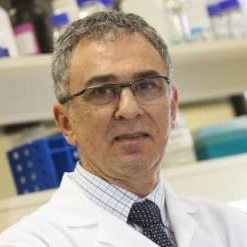Mucopolysaccharidoses: Diagnosis, Treatment, and Management
A special issue of Diagnostics (ISSN 2075-4418). This special issue belongs to the section "Pathology and Molecular Diagnostics".
Deadline for manuscript submissions: closed (30 June 2020) | Viewed by 90466
Special Issue Editors
Interests: lysosomal storage disease; mucopolysaccharidoses; newborn screening; bone targeting
Special Issues, Collections and Topics in MDPI journals
2. Medical Genetics Service, HCPA, Porto Alegre 90035-903, Brazil
Interests: inborn errors of metabolism, particularly lysosomal disorders
Special Issues, Collections and Topics in MDPI journals
Interests: regulation of DNA replication; control of gene expression; oxidative stress in bacterial virulence; molecular mechanisms of mucopolysaccharidoses; development of novel therapeutic options
Special Issues, Collections and Topics in MDPI journals
Interests: mucopolysaccharidosis
Special Issues, Collections and Topics in MDPI journals
Interests: mucopolysaccharidoses
Special Issues, Collections and Topics in MDPI journals
Special Issue Information
Dear Colleagues,
Mucopolysaccharidoses (MPS) are relatively frequent as a group among inborn errors of metabolism, with an overall incidence estimated around 1 of 20,000–25,000 births. If the clinical signs and symptoms appear, the excessive excretion of urinary glycosaminoglycans (GAGs) seen in MPS patients will provide a simple screening method with the identification of the specific enzyme deficiency. The development of therapeutic options for MPS, including hematopoietic stem cell transplantation (HSCT) and enzyme replacement therapy (ERT), has modified the natural history of many MPS types. In spite of the improvement in some tissues and organs, significant challenges remain unsolved, including blood–brain barrier, brain and avascular cartilage, heart valves, and cornea. Newer approaches, such as intrathecal ERT, ERT with fusion proteins to cross the blood–brain barrier, gene therapy, substrate reduction therapy, chaperone therapy, and combined strategies, may provide a better outcome for MPS in the near future.
Therapies should start at a very early stage prior to irreversible bone lesion, and damage due to the severity of CNS involvement and skeletal dysplasia is associated with level of activity during daily life. As early diagnosis and early treatment are imperative to improve therapeutic efficacy, the inclusion of MPS in newborn screening programs should reduce the morbidity associated with MPS diseases. Additionally, we will provide insights into primary storage materials on GAGs (“GAGnomics”), the measurement of GAGs, the pathogenesis pathway with the accumulation of GAGs, and GAGs’ role as a biomarker.
In this Special Issue, we will summarize diagnosis, treatment, and management of MPS and will evaluate available treatments such as ERT; HSCT; and future treatments including gene therapy, substrate reduction therapy, and chaperon therapy, and will describe their advantages and disadvantages. We will also assess the current clinical endpoints and biomarkers used in clinical trials.
Overall, this Special Issue illustrates an up-to-date overview of pathogenesis, diagnosis, biomarker, screening, and updated therapies and their impact in MPS. It comprehensively covers many areas in the MPS field and appeals to a broad range of readers including physicians, scientists, students, pharmaceutical companies, and MPS communities.
You may choose our Joint Special Issue in IJMS.
Welcome submissions to the Second Version of Special Issue "Mucopolysaccharidoses: Diagnosis, Treatment, and Management 2.0".
Prof. Dr. Shunji Tomatsu
Prof. Dr. Roberto Giugliani
Prof. Dr. Grzegorz Wegrzyn
Prof. Dr. Brian Bigger
Dr. Julia B. Hennermann
Guest Editors
Manuscript Submission Information
Manuscripts should be submitted online at www.mdpi.com by registering and logging in to this website. Once you are registered, click here to go to the submission form. Manuscripts can be submitted until the deadline. All submissions that pass pre-check are peer-reviewed. Accepted papers will be published continuously in the journal (as soon as accepted) and will be listed together on the special issue website. Research articles, review articles as well as short communications are invited. For planned papers, a title and short abstract (about 100 words) can be sent to the Editorial Office for announcement on this website.
Submitted manuscripts should not have been published previously, nor be under consideration for publication elsewhere (except conference proceedings papers). All manuscripts are thoroughly refereed through a single-blind peer-review process. A guide for authors and other relevant information for submission of manuscripts is available on the Instructions for Authors page. Diagnostics is an international peer-reviewed open access semimonthly journal published by MDPI.
Please visit the Instructions for Authors page before submitting a manuscript. The Article Processing Charge (APC) for publication in this open access journal is 2600 CHF (Swiss Francs). Submitted papers should be well formatted and use good English. Authors may use MDPI's English editing service prior to publication or during author revisions.










